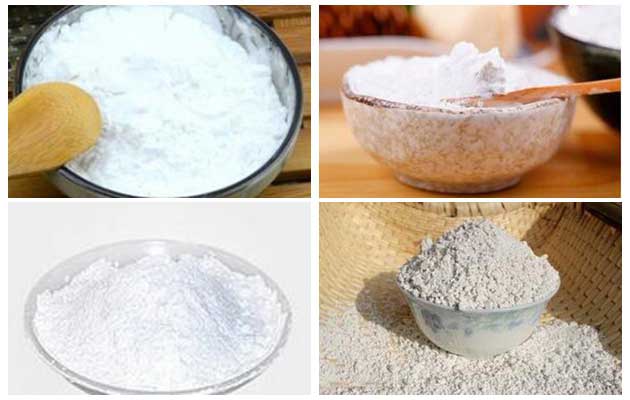Traditional Production Process of Sweet Potato Starch
The traditional production process is as follows: raw material selection - washing - crushing - grinding filter - pulp - skimmer and cylinder - skimming - from powder - dry.

1, raw material selection: As sweet potato varieties, its quality and starch content is also different, even if the same species, in different origin, its quality is also very different.
2, washed: the sweet potatoes into the tank with water, with artificial washing, after washing out, drain to the remaining water.
3, broken: drain the fresh potato with a crusher into pieces, block the size of 2 cm below, in order to facilitate the grinding.
4, grinding filter: This is the main link of sweet potato starch production, affecting product quality and starch yield. The fresh potato fragments sent to stone or diamond grinding water into a potato paste, fresh potato weight and the amount of water to the ratio of 1: 3-3.5. And then filter the residue into a 60 mesh sieve.
5, pulp: the filtered starch powder into the big tank, then by adding the proportion of acid pulp and water to adjust the acidity and concentration of starch milk. The acidity and concentration of starchy milk are closely related to the precipitation of starch and protein.
6, skimmer cylinder and sitting cylinder: after standing for about 20-30 minutes after the pulp, so that precipitation is completed, you can write cylinder. The upper clear swill and protein, fiber and a small amount of starch mixture removed, leaving the bottom of the starch. In the bottom of the cylinder after the addition of water in the water mixture, transferred into starch milk, starch precipitation.
7, skim filter: the cylinder generated by the acid pulp is called two and pulp, that is, the main use of acid pulp acid pulp. Fermented normal acid pulp with fragrance, pulp white as milk.
8, from the powder: starch in the small tank after the precipitation, the upper liquid for the small pulp, with the use of acid pulp, or as grinding water. After skiming the small pulp, there is a layer of gray powder on the surface of the starch, which contains the impure starch of the protein.
9, dry: through the above process, get wet starch. In order to facilitate storage and transportation must be dry. The general use of sun drying or drying room drying.

1, raw material selection: As sweet potato varieties, its quality and starch content is also different, even if the same species, in different origin, its quality is also very different.
2, washed: the sweet potatoes into the tank with water, with artificial washing, after washing out, drain to the remaining water.
3, broken: drain the fresh potato with a crusher into pieces, block the size of 2 cm below, in order to facilitate the grinding.
4, grinding filter: This is the main link of sweet potato starch production, affecting product quality and starch yield. The fresh potato fragments sent to stone or diamond grinding water into a potato paste, fresh potato weight and the amount of water to the ratio of 1: 3-3.5. And then filter the residue into a 60 mesh sieve.
5, pulp: the filtered starch powder into the big tank, then by adding the proportion of acid pulp and water to adjust the acidity and concentration of starch milk. The acidity and concentration of starchy milk are closely related to the precipitation of starch and protein.
6, skimmer cylinder and sitting cylinder: after standing for about 20-30 minutes after the pulp, so that precipitation is completed, you can write cylinder. The upper clear swill and protein, fiber and a small amount of starch mixture removed, leaving the bottom of the starch. In the bottom of the cylinder after the addition of water in the water mixture, transferred into starch milk, starch precipitation.
7, skim filter: the cylinder generated by the acid pulp is called two and pulp, that is, the main use of acid pulp acid pulp. Fermented normal acid pulp with fragrance, pulp white as milk.
8, from the powder: starch in the small tank after the precipitation, the upper liquid for the small pulp, with the use of acid pulp, or as grinding water. After skiming the small pulp, there is a layer of gray powder on the surface of the starch, which contains the impure starch of the protein.
9, dry: through the above process, get wet starch. In order to facilitate storage and transportation must be dry. The general use of sun drying or drying room drying.

